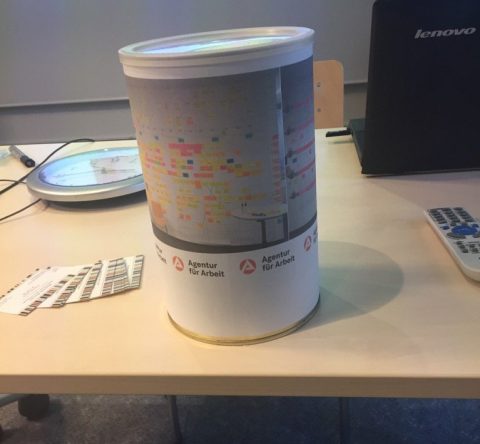According to presentations at relevant conferences and blog articles on the subject, coaching in modern leadership is the number one toolkit. This is entirely appropriate if certain rules and limits are observed. However, the misunderstood and, therefore, incorrect use of coaching tools can lead to a lasting deterioration in the relationship between managers and employees.
We would like to make an offer right at the beginning regarding the use of language: We like the term “leadership personality” much better than “leader” because modern leadership requires personality and attitude rather than strength and assertiveness.
Experience expertise – through non-knowledge and impartiality
When using coaching tools, a leader inevitably finds themselves in the difficult position of sitting between two stools: The position as a leader with content expertise on the one hand and the position of the coach with their indispensable attitude of non-knowledge and impartiality on the other. The attitude of not knowing is based on the assumption that the coachee (as the client is called in coaching) is the only true expert on their situation. In this way, the coach remains curious and avoids offering quick solutions, which always originate from his world of experience and thus his interpretation. By impartiality, on the other hand, we mean that all opinions and statements are equally valid for the coach, i.e. that he can be an advocate for each individual party.
As a leader, you naturally pursue a goal in most cases and also have your own opinion on a professional situation. For the most part, you also have to adhere to overriding corporate goals. Therefore, both the attitude of not knowing and impartiality are rarely realistic in this role – unlike with a coach, who is always unintentional with regard to the goal that the coachee wants to achieve.
The following thought is therefore often helpful: In your role as a leader, you are rarely in a position to take on the role of an unintentional coach. However, you can use coaching tools in modern leadership to support the achievement of common goals. Let’s have a look at some examples of leadership situations in which coaching tools can be used sensibly, and in which you should rather use other means of communication.
Sensible use of coaching tools (coaching in modern leadership)
If, for example, you need to moderate a conflict in which you can honestly maintain an attitude of impartiality, coaching questions are a great aid. If you want to lead workshops in which the participants need to formulate a goal together or develop a vision, you are also ideally equipped with these tools. You can also excel as a coach when supporting one of your employees in a personal crisis or if you want to provide unintentional support for personal development – for example, before or after changes in the company, department or team.
However, coaching tools are out of place in situations where you are providing your employees with professional input and information or even communicating a decision that has already been made. Clear statements are required here. Criticism is best expressed in the form of a wish because that’s all it is, and positive feedback is in the form of honest appreciation: prompt, specific and personal. In these cases, the coaching case can safely remain closed. Oh yes – and if you think you are right to coach one or the other employee, take this tip to heart: Find an impartial and impartial coach to work with you!
Which coaching tools are useful
The magic bullet: A sympathetic ear and the gift of undivided attention are often enough to solve problems or at least take you one step further. Simply listen until the other person finishes speaking, and then report back what strengths and values you have discovered behind the story.
Probably the most frequently used coaching tool is the question. They come in a wide variety of forms: Open questions, closed questions, directed and undirected questions, clarification questions and hypothetical questions – you are probably familiar with these, as they are also used constantly in everyday life.
Some of the more unusual-sounding questions that will quickly reveal you as a coaching tool user include scaling questions, coping questions, circular questions, meta-questions, questions about exceptions and the miracle question coined by Insoo Kim Berg.
Like many solution-focused questions, scaling questions are aimed at mapping a desired target position. Based on what has already been achieved on the way there, the next intermediate goals are described and steps are formulated to achieve them. Other types of questions aimed at describing the desired future or activating the interviewee’s resources and making their potential visible can also be used.
As a general rule, only ever ask a question if you want an honest answer. Remember that you may well hear answers that contradict your wishes as a leader. And then you have the choice of responding angrily or with gratitude and curiosity.
Trust and voluntariness as basic requirements
In coaching situations, trust and voluntariness are basic requirements. This also applies to the use of coaching tools in performance reviews. Some employees may have experienced that openness in discussions with their leadership personality has a negative impact on their career. As soon as fear is involved, efforts at honest conversation are bound to fail. What you need now are your helpers, “patience” and “confidence”. These employees must first learn to trust. Depending on their experience, this can take different amounts of time and effort.
When using coaching tools, you as a leader should also make sure that you only ask your interviewee these wonderful questions voluntarily. The respective wishes of your counterpart must be taken seriously so that a sustainable working relationship can develop.
Conclusion: If you ask, you lead! If you listen, you will be followed!
To be a good leader in the modern working world, you need the following ingredients: A positive view of people, patience and confidence, the attitude of not knowing and of impartiality and a large portion of honest interest, coupled with skillful questioning techniques.
3





